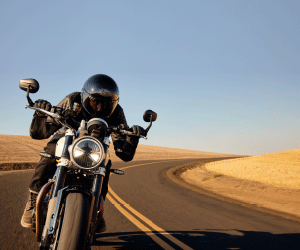We know that this topic does not hide great secrets for most motorcyclists, and many of those who ride motorcycles, only on some sporadic rides, also do not prioritize fuel consumption… Because if it were so – if the motorcycle was just a rational and not emotional means of transportation – we would probably all be riding scooters between 125 and 400 cc.
What we mean by all this is that it is possible to continue to enjoy driving even with economy in mind (and the preservation of the planet), whether with a motorcycle over 20 years old, still with carburetors, or with a current motorcycle. And since most of us ride combustion motorcycles, with the rise in fuel prices always present, it is worth sharing some tips that will help us save gasoline but also other components like tires, brake pads, or transmission kits.
– Warm up the engine? Not worth it! The time when it was necessary to warm up the engines for a long time is gone. Now it is more than enough to start the engine before putting on the helmet and gloves, and then start off smoothly.
– Regularly check tire pressure! This is another essential point, not only because a tire with too low pressure will offer greater rolling resistance, increasing consumption (and tire wear), but also because it can create instability on the motorcycle. So, check the pressure (when cold), and do not rely entirely on your motorcycle’s instrumentation if it provides that information. Also, do not overinflate, simply follow the manufacturer’s recommendation for solo and passenger/cargo riding. If you plan to take trips in the summer, with heat and on highways, you may also opt for a more touring tire instead of a pure sport tire. You may benefit a little in consumption but above all from less tire wear, without compromising grip.
– Choose smooth driving! This tip is also easy to understand. If you like to rev the engine to the “red-line” frequently, it is unlikely that fuel consumption will be favorable. You can enjoy a lot, even with smooth driving, using more low and medium revs, and anticipating maneuvers. For this, you should leave a greater distance to the vehicle in front of you, allowing you to decelerate earlier and avoid unnecessary harsh braking. You will save gasoline, tires, and brake pads, as well as drive safer and more calmly on the road.
– High speeds no! Consumption will skyrocket as aerodynamic drag becomes noticeably felt after 100/120 km/h. From there, not only will you not be complying with the law, you may find that fuel consumption increases significantly, leading to a rapid decrease in autonomy… When going downhill, do not use the clutch lever to save fuel! Fuel consumption will not benefit and safety will be greatly compromised!
– Do not neglect maintenance! Cheap turns out to be expensive, as the saying goes, and it is the absolute truth. Therefore, do not neglect to perform maintenance on your motorcycles in a timely manner, using the most suitable engine oil, and replacing filters and spark plugs as needed. The drive chain should also be well lubricated, and in the case of a motorcycle with carburetors, there is even more need for the carburetion to be well tuned. Even so, even if well maintained, a carbureted motorcycle will always consume more fuel than a modern one with the same power. Manufacturers were “forced” to evolve a lot in this aspect and current motorcycles “drink” much less fuel than those from a few years ago.
– Only take what you need! If you usually do not remove the side cases or top case from your motorcycle out of laziness, know that fuel consumption is possibly being affected by the additional weight, but above all because of the worse aerodynamics, if you are traveling on fast roads or highways.
– Use the most appropriate gear and take advantage of electronics! You don’t always have to ride in sixth gear, but learning to understand the engine and use the gearbox can be very helpful. If the motorcycle has different riding modes or an Eco function (a light remains on the instrumentation if we are using the “calmer” zone of the engine), then take advantage of these features. If the motorcycle or scooter has a “start-stop” system installed, which has long existed in the automotive world and has been increasingly common in two-wheelers, then use it! Cruise control is also a system that can help, especially on longer trips, to control speed and consequently fuel consumption.
– Mechanical changes only harm! Installing exhausts, filters, changes in intake, etc., may improve performance but will never benefit fuel consumption, so pay attention to this detail as well.











